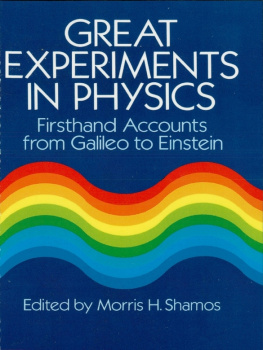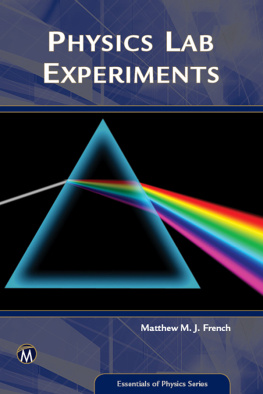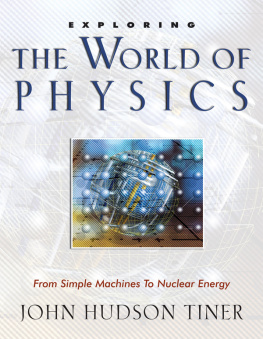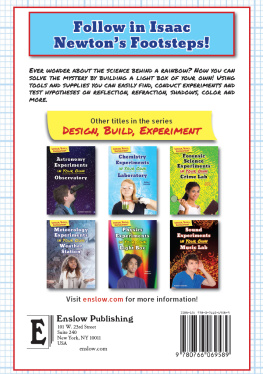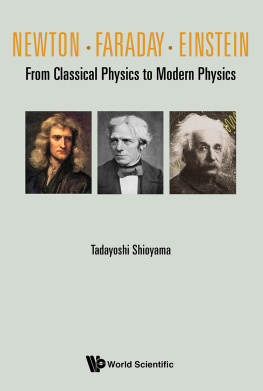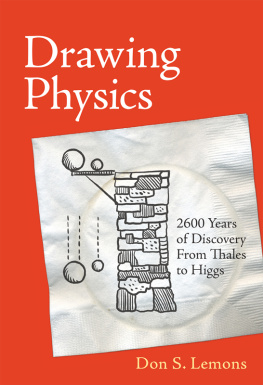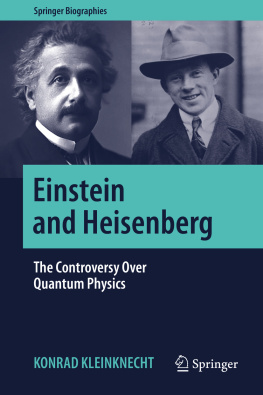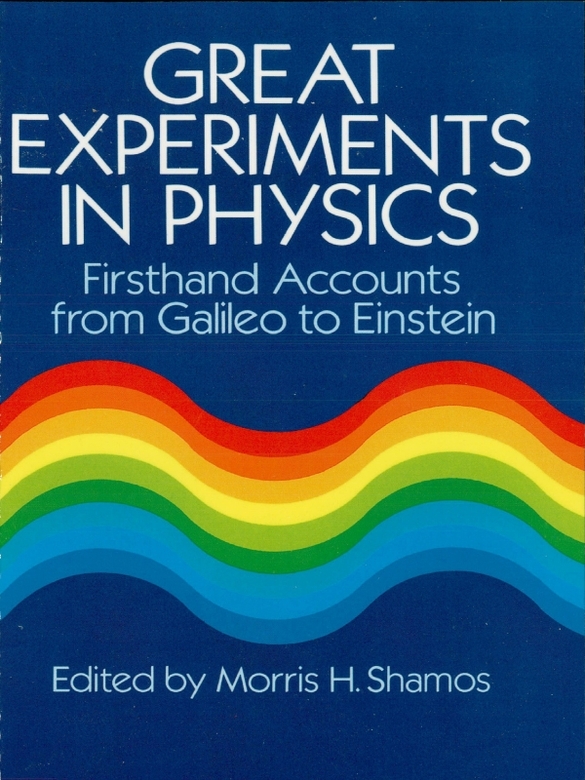DOVER BOOKS ON PHYSICS
EXACTLY SOLVED MODELS IN STATISTICAL MECHANICS, R. J. Baxter. (0-486-46271-4)
QUANTUM MECHANICS OF ONE- AND TWO-ELECTRON ATOMS, Hans A. Bethe and Edwin E. Salpeter. (0-486-46667-1)
PHYSICAL ADSORPTION: FORCES AND PHENOMENA, L. W. Brunch, Milton W. Cole and Eugene Zaremba. (0-486-45767-2)
LASER LIGHT SCATTERING: BASIC PRINCIPLES AND PRACTICE. SECOND EDITION, Benjamin Chu. (0-486-45798-2)
ALGEBRAIC METHODS IN STATISTICAL MECHANICS AND QUANTUM FIELD THEORY, Dr. Grard G. Emch. (0-486-47209-4)
INTRODUCTION TO MODERN OPTICS, Grant R. Fowles. (0-486-65957-7)
WEAK INTERACTIONS AND MODERN PARTICLE THEORY, Howard Georgi. (0-486-46904-2)
COLLISION THEORY, Marvin L. Goldberger and Kenneth M. Watson. (0-486-43507-5)
GROUP THEORY IN QUANTUM MECHANICS: AN INTRODUCTION TO ITS PRESENT USAGE, Volker Heine. (0-486-45878-4)
CONDENSED MATTER PHYSICS, Akira Isihara. (0-486-45877-6)
QUANTUM FIELD THEORY, Claude Itzykson and Jean-Bernard Zuber. (0-486-44568-2)
THEORETICAL PHYSICS, Georg Joos and Ira M. Freeman. (0-486-65227-0)
QUANTUM MECHANICS IN SIMPLE MATRIX FORM, Thomas F. Jordan. (0-486-44530-5)
OPERATORS AND REPRESENTATION THEORY: CANONICAL MODELS FOR ALGEBRAS OF OPERATORS ARISING IN QUANTUM MECHANICS / Palle E. T. Jorgensen. (0-486-46665-5)
FUNDAMENTALS OF MATHEMATICAL PHYSICS, Edgar A. Kraut. (0-486-45809-1)
QUANTUM MECHANICS: NEW APPROACHES TO SELECTED Topics, Harry J. Lipkin. (0-486-45893-8)
A TREATISE ON THE MATHEMATICAL THEORY OF ELASTICITY (EOU), . (0-486-46425-3)
STOCHASTIC TOOLS IN TURBULENCE, John L. Lumley. (0-486-46270-6)
A TREATISE ON ELECTRICITY AND MAGNETISM, VOL. 1, James Clerk Maxwell. (0-486-60636-8)
A TREATISE ON ELECTRICITY AND MAGNETISM, VOL.. 2, James Clerk Maxwell. (0-486-60637-6)
QUANTUM MECHANICS, Albert Messiah. (0-486-40924-4)
STATISTICAL FLUID MECHANICS, VOLUME II: MECHANICS OF TURBULENCE, A. S. Monin and A. M. Yaglom. (0-486-45891-1)
STATISTICAL FLUID MECHANICS, VOLUME I: MECHANICS OF TURBULENCE, A. S. Monin and A. M. Yaglom. (0-486-45883-0)
SINGULAR INTEGRAL EQUATIONS: BOUNDARY PROBLEMS OF FUNCTION THEORY AND THEIR APPLICATION TO MATHEMATICAL PHYSICS, N. I. Muskhelishvili. Translated by J. R. M. Radok. (0-486-46242-0)
INTRODUCTION TO THE QUANTUM THEORY: THIRD EDITION, David Park. (0-486-44137-7)
APPLICATIONS OF GROUP THEORY IN QUANTUM MECHANICS, M. I. Petrashen, E. D. Trifonov. (0-486-47223-X)
ALMOST ALL ABOUT WAVES, John R. Pierce. (0-486-45302-2)
CLASSICAL FIELD THEORY, Davison E. Soper. (0-486-46260-9)
CONCEPTS OF CLASSICAL OPTICS, John Strong. (0-486-43262-9)
THE LIGHTNING DISCHARGE, Martin A. Uman. (0-486-41463-9)
SEE EVERY DOVER BOOK IN PRINT AT WWW.DOVERPUBLICATIONS.COM
To M. C. S. and M. I. S.
Copyright 1959 by Morris H. Shamos.
All rights reserved under Pan American and International Copyright Conventions.
This Dover edition, first published in 1987, is an unabridged and slightly corrected republication of the work first published by Holt, Rinehart and Winston, New York, in 1959.
Library of Congress Cataloging-in-Publication Data
Great experiments in physics.
Reprint. Originally published: New York: Holt, Rinehart and Winston, 1959.
Includes index.
1. PhysicsHistory. I. Shamos, Morris H. (Morris Herbert), 1917
QC7.G74 1987 530.09
86-30942
9780486139623
Manufactured in the United States by Courier Corporation
25346512
www.doverpublications.com
Preface
One of the most refreshing aspects of current thought in science education is the realization that to appreciate fully our modern views of the physical world the student should explore the historical growth of ideas from which these views were fashioned. Unfortunately, the trend in recent decades has been quite the opposite. The conventional introductory course in physics has become highly specialized; new developments do not simply supplant the old but add to the already huge body of knowledge, forcing aside the more humanistic elements of the science. When James Conant, in the first of his 1946 Terry Lectures, suggested that science is accumulated knowledge, he had in mind the great progress made in this area during the last few centuries. But the same term may be used to characterize the encyclopedic nature of most present-day introductory courses in physics, or for that matter, in almost any of the laboratory sciences.
Viewed in retrospect, the most significant ideas in physics stand out in simple elegance against a background shadowed by confusion, clouded at times by bigotry, yet always illumined by mans search for truth. Because so many of our key conceptual schemes seem almost self-evident in the light of experience, we frequently lose sight of the fact that there is a history to physics; that the ideas we now take for granted represent major intellectual achievements in the endless effort to understand nature, and that the origin of these ideas forms an important segment of mans cultural development. It is encouraging to note, therefore, a growing interest in the history of science both as a scholarly activity and as a pedagogic tool.
This book has a twofold purpose. It was developed mainly for use by liberal arts students in a new laboratory physics course at Washington Square College designed on the great experiments idea. The course traces the development of physical principles by a detailed study of a number of the most telling experiments in physics. There was the hope, moreover, that as supplementary reading material the book might help fill a gap in the more conventional introductory courses in physics. Other students of science, or of the history of science, and the interested layman may also find it profitable to examine the original accounts of some of these great experiments.
The experiments were selected on the basis of two criteria: first, that they be among those generally recognized as the most important in the evolution of physics, and second, that the concepts be meaningful to beginning physics students and lend themselves to laboratory experience at this level. Most of the experiments, in fact, are found in some form in the usual introductory course. A few conceptual schemes that satisfy only the first requirement, but which are essential for an understanding of contemporary ideas, are included in an appendix.
Except for the use of modern spellings the experiments are presented either in their original, or in translation. Where possible, the original illustrations have been retained; for greater clarity others had to be retouched or redrawn. Each chapter contains a biographical sketch of the individual responsible for the particular discovery, as well as occasional glimpses at the political and cultural atmosphere of the period in which he worked. This material, together with frequent marginal editorial notation, will make it easier, I believe, for the reader to follow the original accounts and to view them in historical perspective.
I wish to acknowledge my gratitude to the many individuals who had some part in the preparation of this work. I am especially grateful to Dean J. W. Buchta of the University of Minnesota for his critical reading of the entire manuscript, and to Professor Henry H. B. Noss of the History Department of New York University for his constructive comments on the first chapter. To my own colleagues in physics I am indebted for generous advice and suggestions, much of which found its way into the manuscript. I owe special thanks to Professor Edgar N. Grisewood, who tested portions of the manuscript in the classroom and was able thereby to offer helpful suggestions based upon student reaction, and to Miss Eleanor Karasak, who participated with Professor Grisewood and me in the initial planning of the course which prompted this book.

